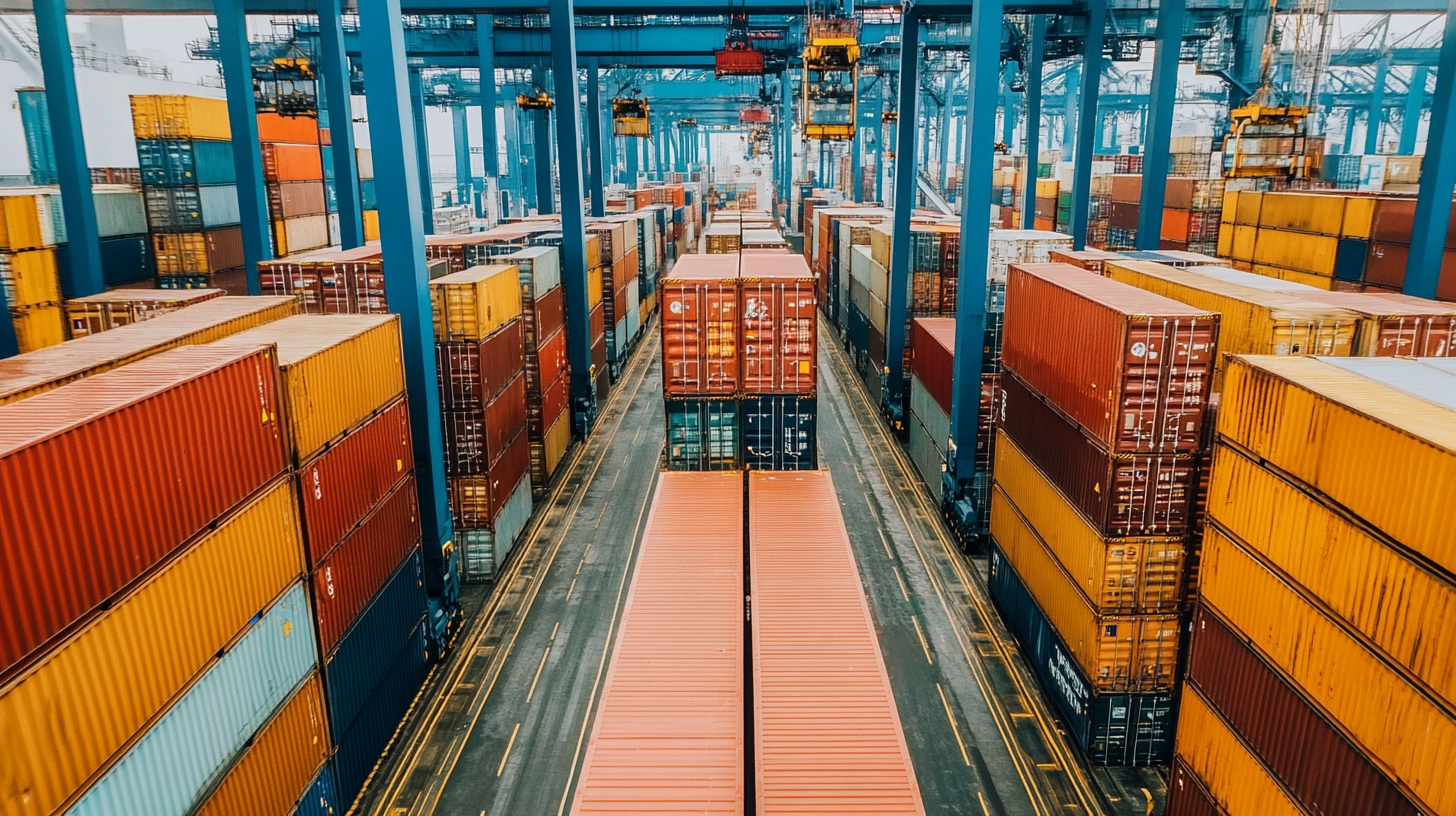Sorry, your browser is not supported. For a better experience, keep your browser up to date. Check here for latest versions
In the midst of escalating tariff challenges between China and the United States, the Chinese manufacturing sector has displayed remarkable resilience and adaptability. According to a report by the China Federation of Logistics & Purchasing (CFLP), manufacturing activity in China rose to a record high in recent months, defying predictions of a slowdown due to tariff disputes. This growth has been notably observed in niche areas such as the production of "Small Shed" solutions, which have become increasingly favored by consumers seeking cost-effective and efficient storage options. The global small structures market is projected to reach $10 billion by 2025, driven by rising demand for customizable and versatile storage solutions. As manufacturers innovate to overcome trade barriers, the focus on Small Shed offerings not only fuels China's economic growth but also illustrates how strategic product development can thrive even in challenging financial climates.

The ongoing U.S.-China trade tensions have significantly reshaped manufacturing strategies on both sides, compelling Chinese firms to innovate in response to tariff policies. According to a report by the China Council for the Promotion of International Trade, over 60% of Chinese manufacturers have modified their supply chains to mitigate the impact of tariffs. This adaptation includes diversifying suppliers and investing in automation technologies that enhance efficiency and reduce dependence on imported materials, providing a more resilient operational structure.
Moreover, the Manufacturing Purchasing Managers' Index (PMI) for China has shown resilience amid these challenges, maintaining a reading above 50 for several months, indicating growth within the sector. This trend has encouraged companies to leverage domestic resources and improve production capabilities. For instance, many manufacturers are now turning to "small shed solutions," which are modular and flexible production setups that can be quickly scaled up or down depending on market demands. As companies embrace these innovative strategies, they position themselves to not only survive but thrive, demonstrating a remarkable adaptability within the landscape of international trade disputes.

In the face of global tariff challenges, Chinese manufacturing is finding opportunities through innovative small shed solutions. The concept of small shed manufacturing has gained traction as businesses seek cost-effective and efficient ways to produce goods. This sector not only caters to local markets but also stands poised to export to regions where demand is rising.
To thrive in this competitive landscape, manufacturers can adopt several key strategies. First, investing in advanced technology can streamline production processes and reduce overhead costs. For instance, automation in assembly lines can enhance productivity and precision, leading to higher quality outputs. Secondly, building strong partnerships within the supply chain is crucial. Collaborating with suppliers for quality materials can minimize delays and improve overall product integrity.
Moreover, sustainability should be a priority in small shed manufacturing. Implementing eco-friendly practices not only meets governmental regulations but also appeals to environmentally-conscious consumers. Whether it's reducing waste in production or sourcing recycled materials, these efforts can enhance a brand's reputation while contributing positively to the environment. By embracing innovative manufacturing solutions and prioritizing sustainability, Chinese manufacturers are well-positioned to navigate tariff challenges and thrive.
| Category | Solution | Advantages | Challenges |
|---|---|---|---|
| Material Selection | Eco-friendly Materials | Sustainable, Lower Environmental Impact | Higher Initial Cost |
| Design Innovation | Modular Designs | Flexible & Easy to Assemble | Storage & Transport Issues |
| Production Efficiency | Automated Manufacturing Processes | Increased Output, Lower Labor Costs | High Initial Investment |
| Customer Engagement | Online Customization Platforms | Enhanced Customer Satisfaction | Need for Technical Support |
| Logistics | Local Sourcing & Manufacturing | Reduced Shipping Costs & Time | Limited Supplier Options |
In the face of evolving tariff challenges, many Chinese manufacturers have demonstrated remarkable resilience and adaptability. Navigating these obstacles, they have found innovative solutions to streamline operations and reduce costs. For instance, one notable case study involves a textile manufacturer that shifted its supply chain strategy by sourcing materials locally. This not only minimized the impact of tariffs but also enhanced product quality and delivery times, allowing the company to stay competitive in a rapidly changing market.
Another inspiring example comes from a technology firm that embraced automation and digital transformation. By investing in smart manufacturing technologies, the company significantly improved its production efficiency and reduced labor costs. This strategic pivot not only mitigated the adverse effects of tariffs but also positioned the company as a leader in its sector, showcasing how agility and foresight can lead to success amidst uncertainty. These case studies underline the importance of innovation and strategic planning in overcoming tariff-related challenges, illustrating that resilience can lead to thriving business models even in tumultuous times.
Chinese manufacturers are increasingly turning to technology to navigate the complex challenges posed by tariffs. According to a report from McKinsey, companies that invest in digital technologies can improve their productivity by up to 30%. In response to tariff pressures, many factories are integrating advanced manufacturing technologies such as automation, artificial intelligence, and IoT solutions to streamline operations and reduce costs. By embracing these innovations, manufacturers are not only enhancing their efficiency but also elevating the quality of their products.
As tariffs shift the competitive landscape, companies are focusing on agility and adaptability. A study by the World Economic Forum found that leading manufacturers who adopt Industry 4.0 practices experience up to 20% savings in operational costs. Chinese firms are increasingly implementing smart manufacturing techniques that allow for real-time data analysis and adaptive production processes. This shift not only mitigates the impact of tariffs but also positions Chinese manufacturers favorably in the global supply chain, allowing them to meet consumer demands swiftly while maintaining competitive pricing. The combination of technological adoption and strategic innovation is proving to be a critical factor in sustaining manufacturing growth within challenging market conditions.
In the evolving landscape of Chinese manufacturing, the future appears bright despite the challenges posed by increasing tariffs. Recent announcements from both Biden and Trump regarding elevated tariffs—some exceeding 60%—reflect a critical turning point in U.S.-China trade relations. However, while these tariffs create obstacles, they also ignite opportunities for innovation and resilience within Chinese manufacturing. According to a report by the World Bank, China's manufacturing sector has displayed remarkable adaptability, with an anticipated growth rate of 5.1% by 2024, attributed to efforts in diversifying supply chains and investing in automation.
Moreover, as multinational companies reassess their supply chains amid geopolitical tensions, many are looking beyond China to enhance resilience. A study by McKinsey & Company indicates that around 50% of global firms are exploring options to reduce their dependency on Chinese production. This shift opens a plethora of prospects for Chinese manufacturers to strengthen their domestic capabilities and invest in new technologies, substantially contributing to the economy. As challenges persist, those in the sector who can pivot and innovate stand to thrive, marking a significant evolution in manufacturing paradigms in the face of adversity.
